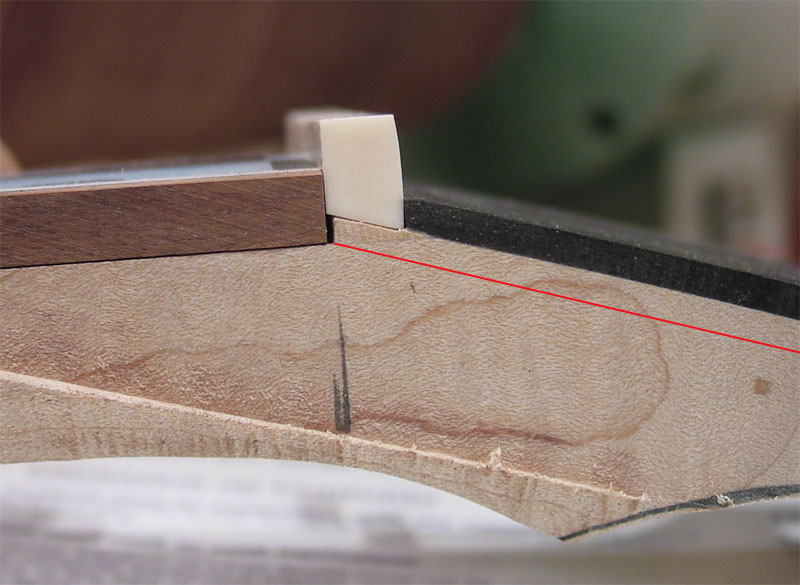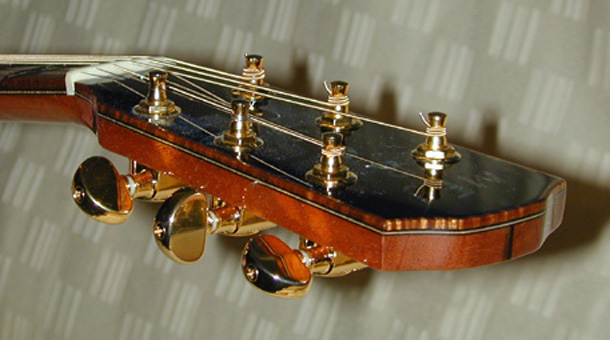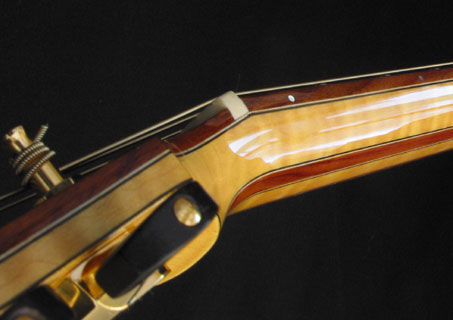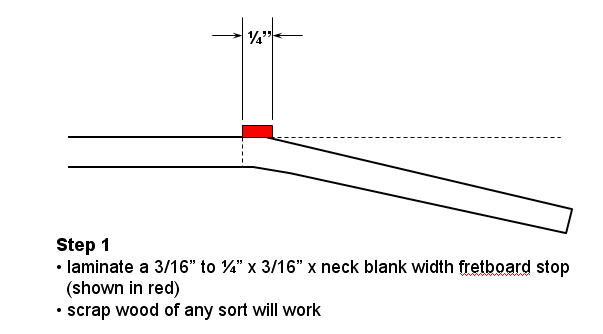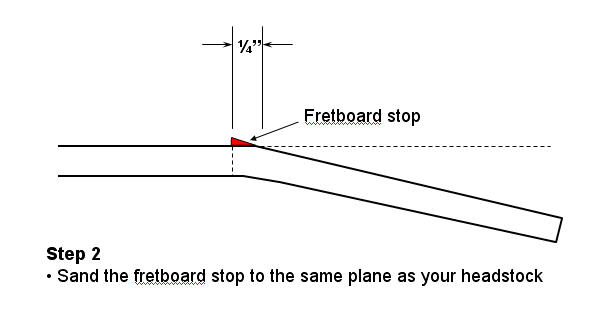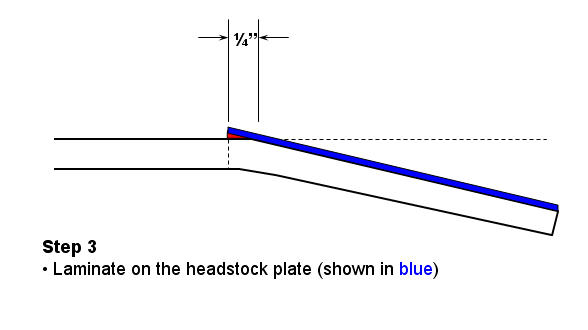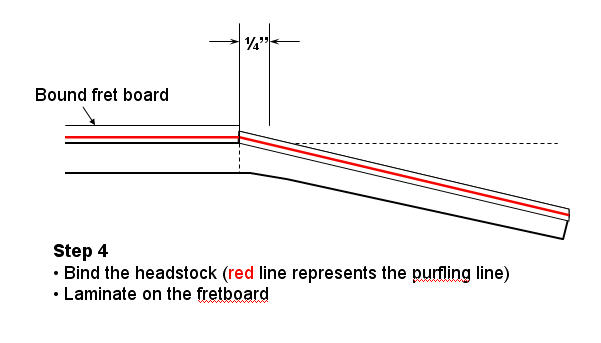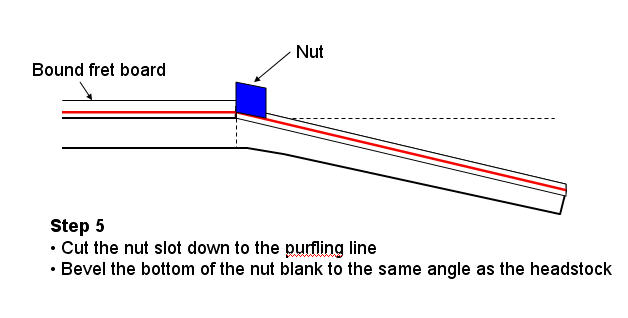Get a look at Benedetto. As far as I know that is the only book which even mentions the problem, which is to get enough room for the side purflings to continue under the nut (where the bindings will stop for a break. Benedetto, however is not very clear in his description or drawings. The stop is glued to the plane of the neck that the board will be on, and its effect is to extend the plane of the headstock over that part of the board, thus setting the nut (which will rest on the stop) a little lower into the headstock face. The nut will have the headstock angle cut on its bottom. So initially, before installing the stop, the plane that the board will be on should go at least 3/16" beyond the end of the board; 1/4" is better. When you are all done, looking from the side, the plane of the neck under the board will appear to end at the end of the board.
A thicker headstock veneer will also give you more room for your binding and side purfling.
When you look at Benedetto, the above will, I hope, make sense.
And bind your headstock before you glue the fingerboard on. Don't ask my why I know this.
[edit] uh-oh. What John does is the opposite of what I do, and why I found Benedetto misleading. But I have to run now, I'll check in later.Howard Klepper39092.6004398148
|
